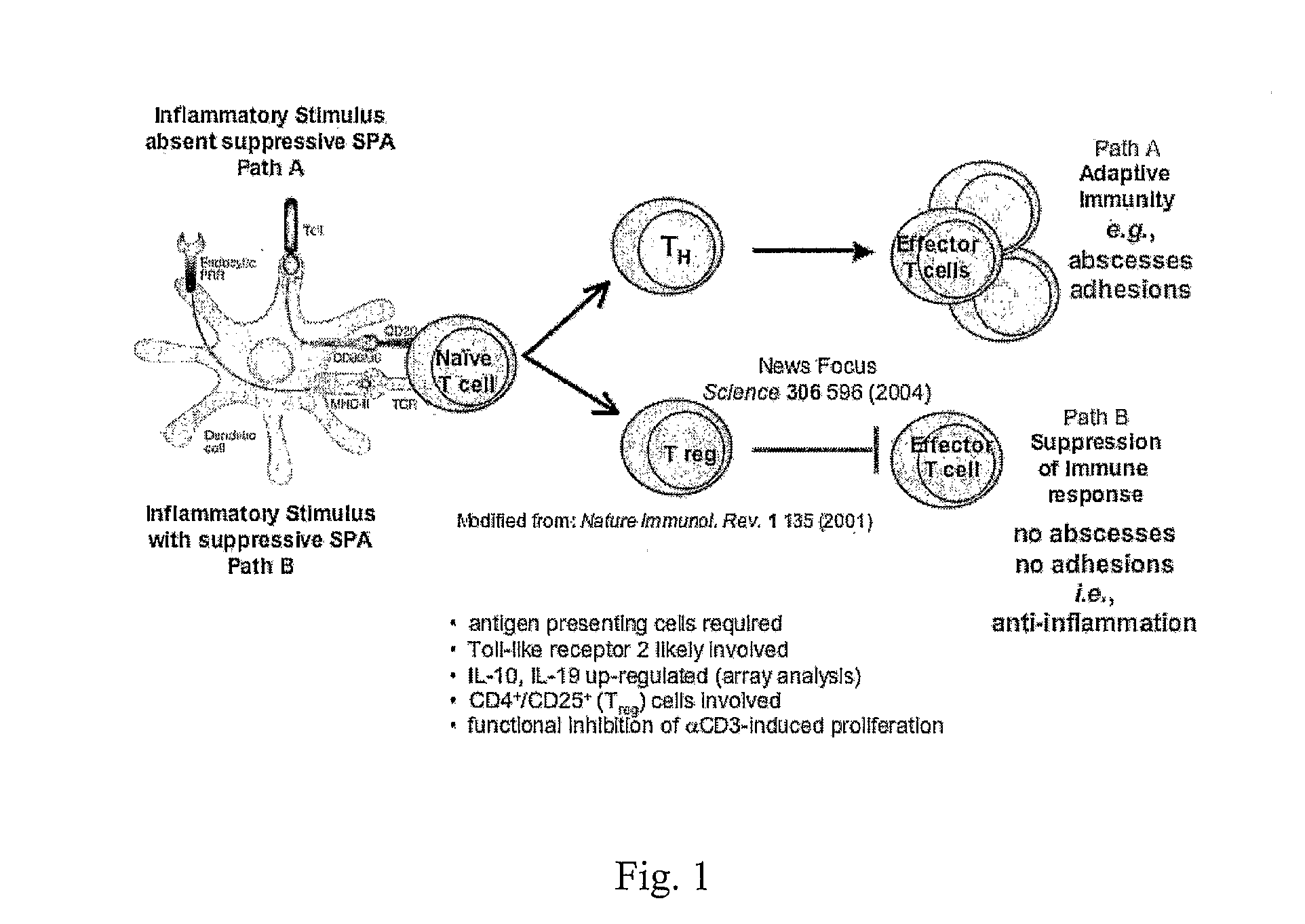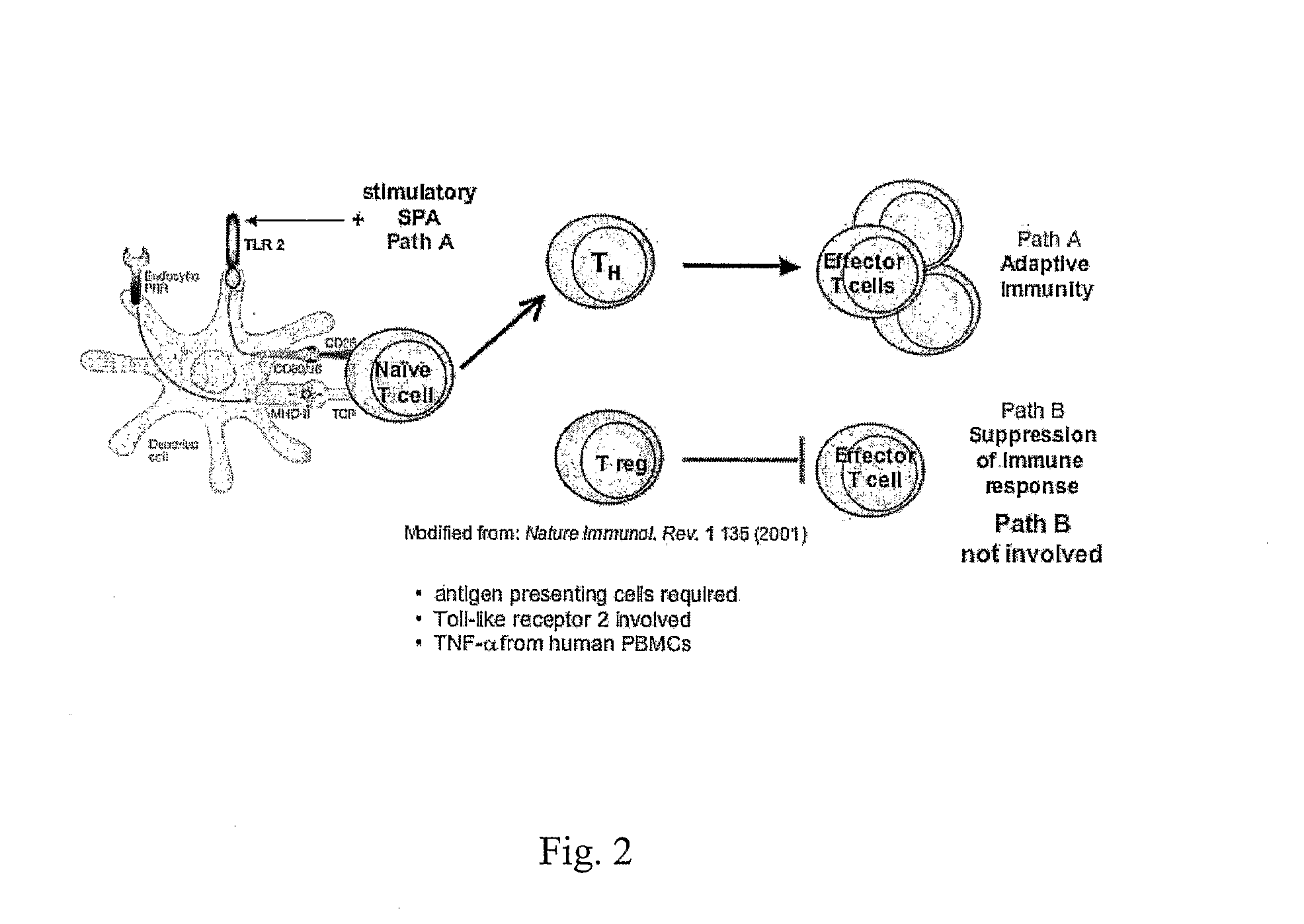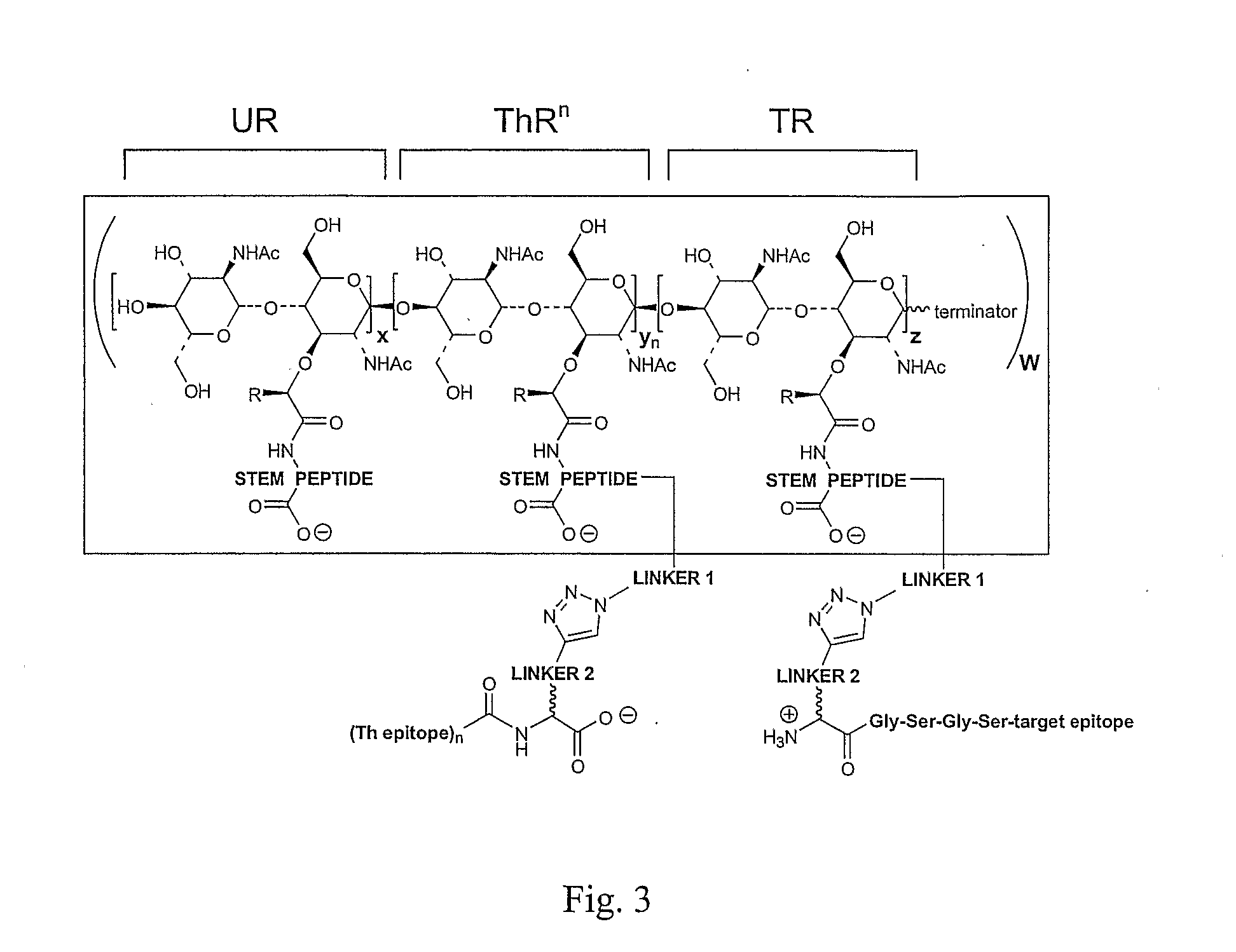Monovalent and polyvalent synthetic polysaccharide antigens for immunological intervention in disease
a synthetic polysaccharide and immunological technology, applied in the field of monovalent and polyvalent synthetic polysaccharide antigens for immunological intervention in disease, can solve the problems of poor immunogenicity of the chosen ctl epitope, ineffective vaccine or immunotherapy preparation, and inability to achieve immunological treatment. , to achieve the effect of a better rou
- Summary
- Abstract
- Description
- Claims
- Application Information
AI Technical Summary
Benefits of technology
Problems solved by technology
Method used
Image
Examples
example 1
Preparation of Compounds of monoSPA and polySPA
[0632]Polymerization of the disaccharide units from lipid II precursors may be executed either before or after covalent attachment of the epitope(s). The physico-chemical properties of the epitope fragments will usually be the factor that determines the choice in route selection. If the peptide or peptide / carbohydrate fragments are soluble, construction of fully elaborated lipids II may be accomplished prior to polymerization. If epitope solubility is an issue, polySPAs may be generated with appropriate epitope attachment points, i.e., alkyl azides, pre-installed. Both alternatives are illustrated in general. Illustrative examples feature suppressive mono / polySPAs; stimulatory mono / polySPAs are prepared in precisely the same manner.
example 1a
Epitope Fragments are Soluble: Fully Elaborated Lipid II Prior to Polymerization
[0633]Synthesis of peptide precursor to bisnor-azido-Lys lipid II. Details will be clear to those skilled in the art of organic synthesis.
[0634]Synthesis of bisnor-azido-Lys lipid II. Details will be clear to those skilled in the art of organic synthesis. Where indicated, precisely the same processes taught in WO03075953 are used wherein Ts-Dipeptide is substituted for Compound 5.
[0635]Epitope(s), mono or poly, are attached to the azido-lipid II precisely as described in the literature (Rostovtsev et al. (2002) Angew. Chem. Int. Ed. 114:2708, which in incorporated herein by reference).
[0636]Co-polymerization of an unsubstituted lipid II, e.g., Compound 14 from WO 03 / 075953, with epitope lipid(s) II using catalytic MtgA under the conditions taught in WO 03 / 075953 results in a monoSPA or a polySPA, as determined by choice of epitope lipid(s) II. The relative rates of polymerization of unsubstituted and epi...
example 1b
Alternative Preparation of Compounds of monoSPA and polySPA
[0637]Co-polymerization of an unsubstituted lipid II, e.g., Compound 14 from WO 03 / 075953, with azido-lipid II using catalytic MtgA under the conditions taught in WO 03 / 075953 results in an SPA with alkyl azides, attachment points for epitopes, distributed along the polysaccharide backbone at a linear density determined by the mole fraction of azido-lipid II in the mixture (mole fraction of unsubstituted lipid II+mole fraction of azido-lipid II=1.00). The relative rates of polymerization of unsubstituted and azide-substituted lipids II are virtually identical.
[0638]The azides are substituted with epitope(s) after polymerization. Clearly, monoSPA or polySPA will result depending on the number of epitopes selected. The epitopes are applied according to Rostovtsev et al. (2002) Angew. Chem. Int. Ed. 114:2708 and the SPA are purified as described for Compound 15 in WO03075953.
PUM
| Property | Measurement | Unit |
|---|---|---|
| Immunogenicity | aaaaa | aaaaa |
Abstract
Description
Claims
Application Information
 Login to View More
Login to View More - R&D
- Intellectual Property
- Life Sciences
- Materials
- Tech Scout
- Unparalleled Data Quality
- Higher Quality Content
- 60% Fewer Hallucinations
Browse by: Latest US Patents, China's latest patents, Technical Efficacy Thesaurus, Application Domain, Technology Topic, Popular Technical Reports.
© 2025 PatSnap. All rights reserved.Legal|Privacy policy|Modern Slavery Act Transparency Statement|Sitemap|About US| Contact US: help@patsnap.com



